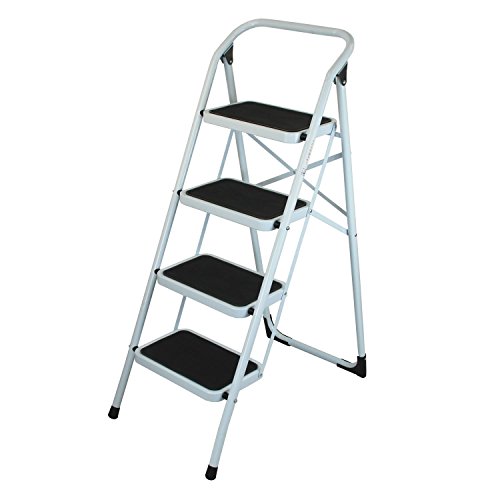Choosing the Right Ladder Size
When it comes to performing tasks that require the use of a ladder, it is important to choose the correct ladder size for the job. Safety should always be the top priority, and using the wrong ladder size can lead to accidents and injuries. In this article, we will discuss how to determine the correct ladder size for a specific task.
Evaluating the Task
The first step in determining the correct ladder size is to evaluate the task at hand. Consider the height you need to reach, the weight you will be carrying, and any other specific requirements or constraints. This will help you determine the type and size of ladder that is suitable for the task.
Height and Reach
The height and reach required for the task are crucial factors in determining the ladder size. You want to ensure that the ladder is long enough to safely reach the desired height without overextending. As a general rule of thumb, the ladder should extend at least one meter above the point of support, such as the roof or landing. This provides a stable and safe platform for climbing and working.
Ladder Types and Restrictions
There are various types of ladders available, each with its own restrictions and limitations. For example, step ladders are self-supporting and can be used for tasks that require access from both sides. Extension ladders, on the other hand, need to be leaned against a support, such as a wall or tree. Understanding the limitations and restrictions of different ladder types will help you choose the right ladder size for your specific task.
Weight Capacity
Another important consideration when choosing a ladder size is the weight capacity. Ladders are designed to hold a specific weight, and exceeding this limit can lead to structural failures and accidents. Check the weight rating of the ladder and ensure that it can safely support your weight and any additional equipment or materials you will be carrying.
Professional Advice and Guidelines
If you are unsure about the correct ladder size for your specific task, it is always best to seek professional advice. Consult with experts who have knowledge and experience in ladder safety and usage. They can provide guidance and recommendations based on your requirements and the specific task at hand.
Additionally, there are industry guidelines and regulations that can help you determine the correct ladder size. Organizations such as the Occupational Safety and Health Administration (OSHA) provide resources and guidelines for ladder safety. Familiarize yourself with these guidelines to ensure that you are using the correct ladder size for your task.
In conclusion, choosing the correct ladder size is crucial for safety and efficiency when performing tasks that require the use of a ladder. Evaluate the task, consider the height and reach required, understand the limitations of different ladder types, and check the weight capacity. Seek professional advice if needed and familiarize yourself with industry guidelines. By following these steps, you can ensure that you are using the right ladder size for a specific task, reducing the risk of accidents and injuries.






